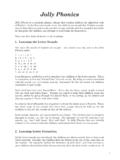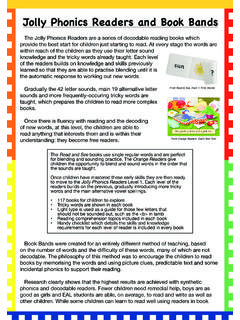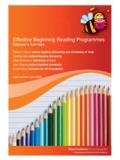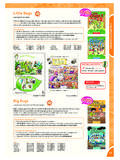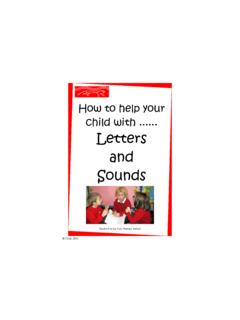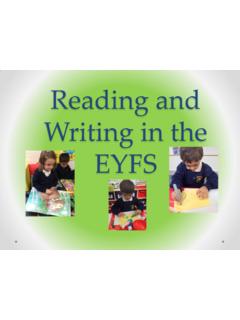Transcription of luebell Park Year 7 Literacy & Numeracy atch Up …
1 Bluebell Park Year 7 Literacy & Numeracy Catch Up funding strategy 2016 2017 Bluebell Park Year 7 Literacy and Numeracy Catch Up funding 2016 2017 The Year 7 Catch Up funding is used to support pupils who have not achieved level 4 by Year 7. We use it in a number of ways to best support the pupils we have here at Bluebell Park. The pupils have a range of needs including severe learning difficulties, complex learning difficulties, autistic spectrum condition and profound and multiple learning difficulties. We endeavour to promote a functional approach to Literacy and Numeracy for our pupils which encourages practising in real life con-texts including the local and wider community. In their guidance, Literacy and Numeracy Stratgies (DfE, Nov 2012), the Government suggest effective ways to utilise the Catch Up funding . Whilst none of the research is specifically gathered from schools for pupils with severe and complex learning difficulties, some precepts are applicable.
2 For instance, they recognise that Coaching teachers/teaching assistants in specific teaching strategies significantly raises outcomes and Success with some pupils with the most severe problems is elusive, and this reinforces the need for skilled, intensive, one-to-one intervention for these pupils . For our pupils, the most important resource available to help raise outcomes is the skills of the person delivering support. We utilise this approach in some of the wasy that we target the fund-ing. Because of the complexities of our pupils needs, a range of evidence is necessary to show progress and achievement. We always strive to celebrate the suc-cesses of our pupils, no matter how small, and through case studies and qualitative studies we are ableto highlight some of the achievements that they make through the interventions put in place. No. of pupils 2016 2017 12 funding allocation 6,000 Year 7 Catch Up funding Planned allocation for funding - Bluebell Park School 2016/2017 Year 7 Catch Up funding is provided to support pupils in Year 7 who have not reached Level 4 in English or Maths by the end of KS2.
3 At Bluebell Park we use this in a number of ways to best meet the individual needs of our pupils in Year 7. Bluebell Park has 12 pupils in Year 7 in 2016/17. Total amount of money received: 6,000 Amount Resources purchased Planned outcome Closing the gap area for improvement How to measure Impact 165 Identified iPad APPs for Literacy and Numeracy Mathletics and readers scheme Pupils are able to continue work at home with parents around basic skills for those pupils working at this level Improved pupil progress and pupil development Access to APP, review of attainment evidence gathered from APP Review of impact 200 Delivery of Jolly Phonics training from trainer Teaching staff and teaching assistants are able to develop knowledge around a method of phonics delivery Improved teaching Attendance at training event, evidence of delivery from plan-ning and lesson observations.
4 Monitoring of pupils phonics acquisition through recording of data Review of impact 200 Identified Jolly Phonics training to sup-port delivery of phonics based ap-proach Teaching staff are able to deliver phon-ics work from training Improved teaching Evidence of delivery from planning and lesson observations. Monitoring of pupils phonics acquisition through recording of data Review of impact 3705 (school supplement additional funding ) Additional TA support for class to ena-ble pupils to access curriculum Pupils are able to access experienced support to enable them to develop their readiness for learning in function-al Literacy and Numeracy Improved pupil progress and pupil development Pupils engagement in lessons is increased and evidenced through decrease in challenging behaviour as evidenced in SLEUTH recording system Review of impact 230 A range of sensory resources purchased to enable pupils working below P4 to access developmental Literacy and Numeracy skills Pupils are able to access developmental Literacy and Numeracy skills within curriculum delivery Improved teaching Improved pupil progress and pupil development Pupils engagement in lessons is increased and evidenced through decrease in challenging behaviour as evidenced in SLEUTH recording system Review of impact
5 1,500 Enrichment groups for pupils delivered by appropriately qualified and experi-enced staff and supplemented through additional staffing for one afternoon per week Small, focused groups able to be deliv-ered targeting individual pupil needs Improved teaching Improved pupil progress and pupil development Pupils have bespoke delivery around their functional use of Literacy and Numeracy in a social group setting Review of impact 6000

